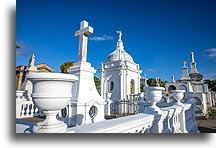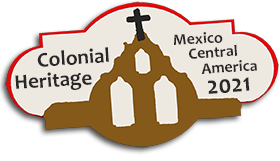Spanish Colonial City
November 21-22



We stayed in Granada, Nicaragua to learn about the city's colonial heritage. One of the oldest cities on the American continent preserved its old Spanish architecture to this day. There are many restored colonial houses with colorful facades and opulent doors, but most of all the churches are reminiscent of the city's rich past. During colonial times, lakeside Granada, was an Atlantic port which maintained trade relations with other Spanish colonies. This was possible because Lake Cocibolca (aka Lake Nicaragua) flows into the Caribbean Sea via the San Juan River. The lake is not so small, it is in the top twenty largest in the world. Granada has in its history not very friendly visits of Caribbean pirates who on several occasions attempted to capture and loot the city.






Grand mausoleums, marble tombs and many religious sculptures make the Granada Cemetery a historical and artistic treasure. On the outskirts of a colonial city, the richest families, Nicaraguan presidents and politicians chose these grounds to express their status even after death. Rows upon rows of opulent White Tombs #1, countless marble angels and crucifixes make this site one of the most beautiful necropolises in the Americas.






The Mombacho Volcano is extinct, but there is a very active Masaya not far from the city. We visited this volcano after dark. It was interesting, but it did not make a great impression on us. Unfortunately, the underground lava caves were closed to visitors.










